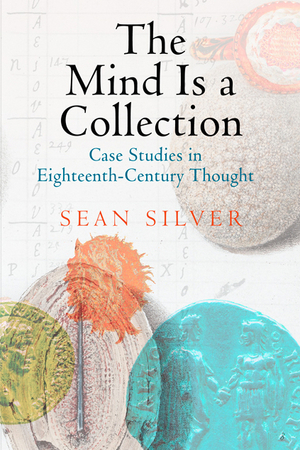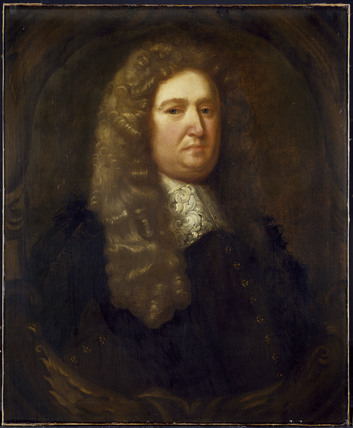12. Plots
There is increasing evidence to suggest that the brain’s higher-order conceptual processes take advantage of areas of the brain dedicated to things we usually think of as “lower-order.” Mental operations, in other words, appear to be neurologically linked to things that the body does. This linkage is called "neural reuse," and one rough way of tracking it is through the metaphors we use, especially metaphors that depend upon spatial orientation to make sense of thoughts. When we say that we are “walking someone through” an idea, or when we speak of ideas “following one another” in a train, then it’s likely that we’re signaling the embodied debts of higher-order conceptual work.
Likewise, even the most academic of academic work tends to lean on what a body can and cannot do—at least loosely speaking (so argue two leading scholars about mathematics). This helps account for the importance of the digression to early modern prose. “Digression” means to turn or to go aside. Rather than pursuing the straight line of an argument, a digression takes a side journey. What is astonishing about the digression is the rapidity with which it can link up ideas. Whereas an argument proceeds logically from point to point, a digression ranges far and wide to gather examples loosely together. Its pleasure is based on the speed of its travel.
Take for instance an author of local histories named Robert Plot. Like Robert Hooke and Joseph Addison (see "A Full Stop" and "Addison's Walk"), and indeed many other figures mentioned in this museum, Plot was strongly associated with a place. Plot was the keeper of the Ashmolean Museum in Oxford—and spent most of his time in and around Oxfordshire. He specialized in a certain genre called “chorography”: a kind of writing that focuses on the exact descriptions of space. He was a wonderful walker, a great traveler of the roads and paths within a day’s walk of the Museum. Oxfordshire was his territory, where he was at home; it was his ecology, or, Oxfordshire and Plot together formed an ecology. For him, Oxfordshire was a chunk of space shot through with significance, and it is the work of his best-known work, his Natural History of Oxfordshire, to invite us to share its most significant features. In this sense, his rambling prose is an early example of what might be called museum-writing, which takes the form of a tour; the mind is invited to take a journey afoot.
Robert Plot, Natural History of Oxford-Shire (London, 1677). Britannia is seated between the instruments of learning and the emblems of media.
The links between mentation and walking are nowhere more apparent than in the last chapter of Plot’s Natural History, a section in which he treats its antiquities. This chapter, which is by far the longest in the book, does not follow any itinerary. That is, you can’t plot out the chapter on a map, and follow his remarks like a walking tour—at least, not in any physical sense. But the careful reader will discover the rhythms of walking his prose, especially the distinction he makes between pursuing an argument by the straight path, and the digression, which brings its own peculiar pleasures.
William Stukeley, Itinerarium Curiosum (2nd ed.: London, 1726).
Also in this exhibit space is an engraving (at top) from William Stukeley’s illustrated voyages of England. Stukeley was to become a celebrated antiquary (see also Exhibit 17), and his Itinerarium Curiosum was a relatively early entry in what was to be a long career. It records his own journey to see Britain’s antiquities, and it is on the strength of documents like these that Stukeley is often named as a founder of modern archaeology. He was interested in Stonehenge, for instance, and ancient barrows where the Britons buried their dead; he was among the first to visit places like these, in order to make judgments about their inhabitants. He was also especially interested in the so-called tumuli, especially Roman tumuli, burial sites dotting the sides of Roman highways.
In this particular engraving (at top), Stukeley has picked out a burial tumulus blocking passage of the Fosse—a Roman road passing with Roman regularity slash-straight across England, past Plot's Oxfordshire. Roman roads were often blocked by tumuli in this way, for, as more than one chorologist has surmised, road builders seem to have used them as waypoints and surveyor's marks. But Tumuli were also deliberately put at or near roads to prompt reflection, that is, deliberately to interrupt a straight journey in order to prompt circulation of a different sort. And, in any case, those few epitaphs that have survived, engraved in stone by the highways, follow the standard format of "siste viator," that is, "pause, traveler."
From the Oxfordshire county line to Oxford, a straight path. John Ogilby, Britannia Depicta (London, 1720). Sights and points of interest, like digressions, are located in the margins.
Good arguments are like journeys; they proceed from point A to point B. They have the structure of any well-organized, simple plot. And in this way, they resemble any number of mapbooks and almanacs--as for instance John Ogilby's mapquest-like book of the roads radiating from London, first published in 1675. Tumuli, however, suggest a different kind of genre altogether. And this brings me back to Plot. As Plot himself insists, tumuli are put by the side of the road specifically to cause travelers to pause and reflect on the life of the person who lies there. The interrupt straight journeys and straight lines of thought. They are designed to prompt digressions.
Plot was a master of the form-- perhaps partly because he was such a brilliant walker. Here is how his digressions worked. Arrested by the sight of a certain tumulus in Oxfordshire, Plot pauses, going on an associative journey of a different sort. In the space of four pages, he ponders classical burial practices, including the so-called heroic or Homeric tumuli, at the mouth of the Dardanelles. He considers the case of Archytas, a mathematician whose burial in a primitive tumulus is mentioned by Horace. He touches on Pompey the Great, whose body was washed ashore in Egypt, where he supposes it was buried. He touches on a couple of tumulus-burials in the Aeneid, Virgil’s great epic of the wandering founders of Rome. He considers some remarks by the wonderfully named Ole Wurm, who records burial-mounds built by the Danes. It is a curious feature of his examples that nearly half are themselves taken from tales of wanderers: like Odysseus and Aeneas. But Plot, too, is a wanderer, especially around the classical Mediterranean rim, visiting places he knows well through his reading, though he himself had never been there.
Plot's digression, itinerary by Curator. Plot might have saved as many as 3,000 miles if he had optimized the journey.
I took the liberty of mapping Plot’s journey, to get a sense of the breathtaking compression that is possible in a good digression. His four-page digression covers nearly 11,000 miles. From his writing desk at the Ashmolean Museum in Oxford, he leaps to various sites in Latium, to a clustering of burial locations near Troy, to the place where Pompey the Great was washed ashore near present-day Port Said, and eventually to Denmark and the northern reaches of the Goths. Plot was a rare one for walking; but even he would have taken perhaps 3,000 hours to make the journey; allowing for sleep, refreshment, and the occasional pause, it would take roughly four years afoot. Mapquest’s directions stretch out to a hundred and forty pages. Scanning the relevant pages in Plot’s Oxfordshire, however, takes about three minutes, even including picking through the Latin and Greek—a rapidity that I personally find dizzying. (Plugging the destinations in Google Earth, by the way, produces a tour of about ninety seconds.)
This is no walking tour—at least not of the sort of solid paperback book that you might take with you on a cruise to the Aegean (see for instance John Freely’s A Travel Guide to Homer). It’s worth remembering that Plot never left England, at least not in body. For Plot, the body stays still, but the mind is free to cross continents and oceans. The aesthetic of a good digression depends upon this sort of compression, linking up well-known literary sites in a sort of mental tour. There’s one more thing that needs to be said—which is that most of the sites in the digression are signaled in the footnotes. And this reminds us that these sorts of tours, though they lean against metaphors of the navigation of space, require powerful machines for crossing space and time. Mapquest can do it, but so too could Plot’s library, where the passage from Troy to Cumae, or Cumae to Port Said can be accomplished in the time it takes to close one book and open another.

